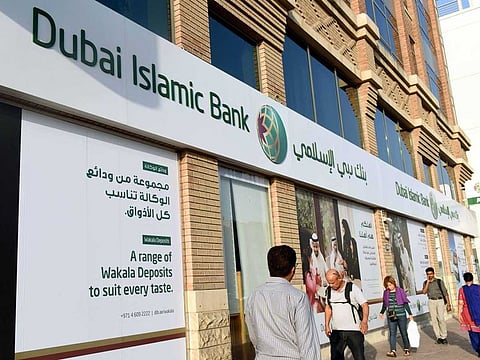Top ten UAE banks’ Q2 profits surged 21.2 per cent compared to Q1
Net interest margin witnessed contraction as cost efficiency improved

Dubai: Top 10 UAE banks posted a 21.2 per cent jump in their net profits for the April-June quarter compared to the previous quarter as a result of lower provisioning and increased cost efficiency, an analysis of published data by Alvarez & Marsal (A&M).
Despite the second quarter improvement in profits, the third quarter recovery is expected to be slow.
Also Read: How to close a bank account in the UAE?
Also Read: How to remit money out of the UAE?
Also Read: How to set up a bank account in the UAE?
Like many banks globally, the UAE’s top lenders are likely to focus more on improving their efficiancy in the coming period as a challenging operating environment demands increased efforts toward cost optimisation.
Lenders witnessed a considerable contraction in net interest margins (NIM) in the second quarter due to many factors such as the shift to the marginal cost of funds-based lending rate, and an all-time low interest rates.
While there has been a peripheral increase in profitability, the outlook for the domestic banking sector still remains subdued as a result of the weakened after-effects of COVID-19, in addition to low oil prices, and the postponement of Expo 2020. Moreover, the low interest environment, along with a possible increase in impairments, is expected to further weigh on profitability.

“While there has been a peripheral increase in profitability, the outlook for the domestic banking sector still remains subdued as a result of the weakened after-effects of COVID-19, in addition to low oil prices, and the postponement of Expo 2020. Moreover, the low interest environment, along with a possible increase in impairments, is expected to further weigh on profitability,” said Asad Ahmed, A&M Managing Director and Head of Middle East Financial Services.
Loans and deposits
Data showed despite challenging market conditions, the banks witnessed a fringe surge in loans and advances, and deposit growth. This has added liquidity in the banking system. Total loans grew 1 per cent quarter on quarter and deposits 1.1 per cent at a slightly better rate in Q2’20, despite COVID-19 lockdowns and low oil prices.
Average loan to deposit ratio (LDR) remained broadly unchanged at 87.7 per cent with Dubai Islamic Bank reporting the highest increase in LDR to 97 per cent in Q2’20 compared to 90.2 per cent in Q1’20. ADIB showed the second highest increase in LDR to 83.1 per cent from 80.3 per cent in Q1’20.
Dubai Islamic Bank outperformed its top peers with double-digit L&A growth of 11 per cent, while Mashreq Bank outperformed its top peers on deposit growth with 11 per cent.
Operating income was impacted for the second consecutive quarter as all income streams weakened. The operating income declined by 9.2 per cent quarter on quarter (QoQ), on the back of reduced net interest and non-interest income levels. Net interest income dropped 7.3 per cent QoQ, as low interest rates more than offset a marginal increase in L&A. Net fee income fell 23 per cent, as lockdowns limited the income arising from cards and new business volumes.
Margin squeeze & profits
Net interest margins (NIM) of top UAE banks fell by about 24 bps to 2.29 per cent in Q2’20, on account of the sharp decline in interest rates. NIM fell repeatedly from Q1 2020, as nine of the banks reported lower NIM during the period.
Average return on equity (RoE) for the universe increased to 9.4 per cent during Q2’20, compared to 9 per cent during Q1’20. Profitability improved as cost optimization measures, lower provisioning supported bottom-line Aggregate net income increased 21 per cent QoQ, as lower operating expenses (-11 per cent QoQ) and provisioning charges (-30 per cent QoQ), helped in offsetting reduced operating income. Coverage ratio for most of the banks declined in Q2’20, as banks reported lower provisioning.
“The profitability of the UAE banks in Q2 2020 rebounded as cost optimisation measures and lower provisioning supported income,” said Ahmed.
Focus on efficiency
Cost-to-income (C/I) ratio continued to improve to reach 33.4 per cent as operating expenses decreased by about 11 per cent, as banks focused to optimize their expenses in light of the challenging environment to support profitability. Three banks were able to report reduced C/I ratio.
“While the central bank expects a pickup in corporate credit demand for Q3’20, the recovery would likely be fragile. In the forthcoming quarters, it may be beneficial for banks to introduce efficiency boosting measures and increase their focus towards digitisation to save costs and support the bottom-line,” said Ahmed.
Sign up for the Daily Briefing
Get the latest news and updates straight to your inbox









